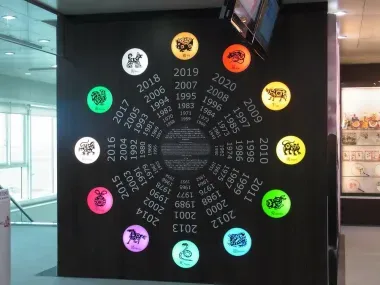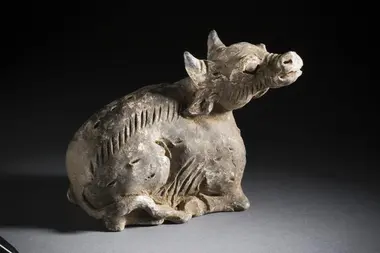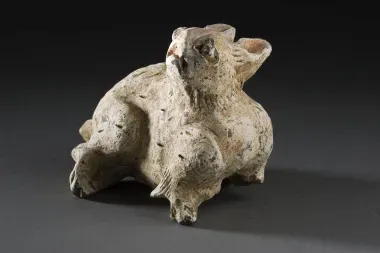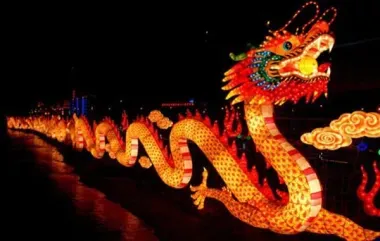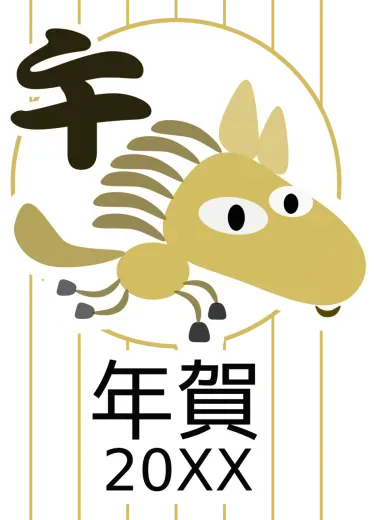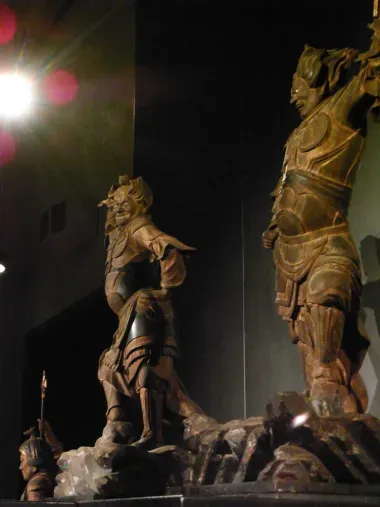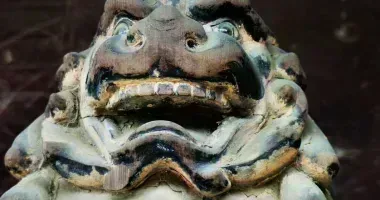Jûnishi: the 12 signs of the zodiac 十二支
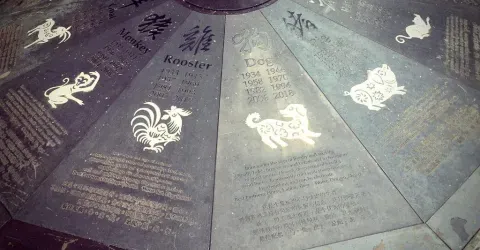
Les signes du zodiaque chinois
Flick/ lemonfilmblog
12 animals and 5 elements for astrological signs
Jûnishi, the twelve signs of the Japanese zodiac are borrowed from the Chinese lunar calendar and although the latter is no longer used, the twelve signs of the zodiac related to it are still very present in Japanese culture.
Twelve signs from the Chinese calendar
Named Genka-reki, the Chinese calendar saw the light of day in 425 in northern China. Beginning on the first day of the lunar year and not January 1, this calendar is based on a 60-year cycle simplified into small cycles of 12 years each. Each year of the mini-cycle is then associated with one of the five elements of the zodiac (metal, water, wood, fire, and earth) and with an animal.
Widely used for orientation in time and space, the lunar calendar spread outside the borders of China and it was in the 600s that it was introduced to Korea, then to Japan, by Chinese Buddhist monks.
Among the animals on the calendar, we find the rat, ox, tiger, rabbit, dragon, snake, horse, goat, monkey, rooster, dog, and pig.
Rat ( nezumi )
- 1900 1960 (Metal)
- 1912 1972 (Water)
- 1924 1984 (Wood)
- 1936 1996 (Fire)
- 1948 2008 (Earth)
Ox ( ushi )
- 1901 1961 (Metal)
- 1913 1973 (Water)
- 1925 1985 (Wood)
- 1937 1997 (Fire)
- 1949 2009 (Earth)
Tiger ( tora )
- 1902 1962 (Water)
- 1914 1974 (Wood)
- 1926 1986 (Fire)
- 1938 1998 (Ter.)
- 1950 2010 (Met.)
Rabit ( usagi )
- 1903 1963 (Water)
- 1915 1975 (Wood)
- 1927 1987 (Fire)
- 1939 1999 (Earth)
- 1951 2011 (Metal)
Dragon ( tatsu )
- 1904 1964 (Wood)
- 1916 1976 (Fire)
- 1928 1988 (Earth)
- 1940 2000 (Metal)
- 1952 2012 (Water)
Snake ( hebi )
- 1905 1965 (Wood)
- 1917 1977 (Fire)
- 1929 1989 (Ter.)
- 1941 2001 (Met.)
- 1953 2013 (Water)
Horse ( uma )
- 1906 1966 (Fire)
- 1918 1978 (Earth)
- 1930 1990 (Metal)
- 1942 2002 (Water)
- 1954 2014 (Wood)
Goat ( hitsuji )
- 1907 1967 (Fire)
- 1919 1979 (Earth)
- 1931 1991 (Metal)
- 1943 2003 (Water)
- 1955 2015 (Wood)
Monkey ( saru )
- 1908 1968 (Ter.)
- 1920 1980 (Met.)
- 1932 1992 (Water)
- 1944 2004 (Wood)
- 1956 2016 (Fire)
Rooster ( tori )
- 1909 1969 (Earth)
- 1921 1981 (Metal)
- 1933 1993 (Water)
- 1945 2005 (Wood)
- 1957 2017 (Fire)
Dog ( inu )
- 1910 1970 (Metal)
- 1922 1982 (Water)
- 1934 1994 (Wood)
- 1946 2006 (Fire)
- 1958 2018 (Earth)
Bore ( inoshishi )
- 1911 1971 (Met.)
- 1923 1983 (Water)
- 1935 1995 (Wood)
- 1947 2007 (Fire)
- 1959 2019 (Ter.)
There are several legends regarding the choice and order of appearance of these animals on the calendar. One of the most famous is that of the Buddha's dinner.
One day, Buddha would have organized a big dinner with 12 places where all the animals of his kingdom were invited. The first twelve animals to arrive would then have the honor of dining with him and of being proclaimed " animal-symbol '' for the whole year.
The animals having heard of the news therefore all rushed to Buddha's home.
The ox had left to arrive at the head of the race but was fooled by the rat who rode on his back because he was too small to be able to walk for so long. Upon arrival, the rat descended from the ox, finishing first in place. This same rat which, a few hours before, had fooled the cat with the same trick at the river to be sure that it could not steal its place on the back of the ox, the two animals having had the same idea.
From this legend would come the fact that people born under the year of the ox would be gullible, while those born under the year of the rat would not be trustworthy. This myth would also explain why the cat constantly tries to chase the rat for revenge.
Then came the tiger, then the rabbit, and the dragon. The dragon was the big favorite in the race due to its ability to move quickly through the air. Unfortunately for him, he stopped on the way to help a village in distress. Hence the idea that people born under the year of the dragon would be generous people.
Next come the snake and the horse. Like the rat, the snake played a trick to reach the home of Buddha. He slipped into the horse's mane and leaped in front of it at the finish to scare it and earn a place in the standings.
From this, was born the idea that the people of the Year of the Horse would be quite timid and those of the Year of the Snake would like to play bad tricks.
Then came the goat, the monkey, and the rooster who made the trip together, then the dog and the bore. The latter would then have finished the race very late because they would have often stopped on the way: the dog to have fun, and the pig to eat.
Superstitions linked to the Jûnishi
As in any astrological model, the signs of Jûnishi are accompanied by superstitions.
The personality of the person born under this or that sign would be influenced by the character traits of the animal attached to it and it would be possible to predict the future of a relationship based on the compatibility that exists between them. signs of the two lovers. Thus, people born in the year of the bore would be good and those born in the year of the dog would be faithful in love and friendship.
In fact, to the animals are added the elements which correspond to each year of birth. Thus, a person born in the year of the metal horse would not have the same personality at all as a person born in the year of the water horse.
Speaking of a horse! Have you ever heard of Hinoeuma?
This superstition surrounding the Chinese zodiac is certainly one of the best known. According to legend, women born under the year of the fire horse are believed to be so strong that dominating their mates!
If this story has something to smile about, it nevertheless seems to be taken seriously by the Japanese since every sixty years, the number of births drops during the year of the fire horse, the couples fearing to give birth to a little girl who would be too strong to be considered for marriage? This is why during the last Hinoeuma in 1966, the birth rate mysteriously dropped from 2.14 to 1.58, only to skyrocket the following year.
Fortunately, all is not black and white in the Jûnishi ! And every twelve years, each sign is entitled to its share of happiness. Called '' Toshi-otoko '' if it is a man, or '' Toshi-onna '' if it is a woman, the person born under the sign of the animal symbol of the year will experience. lucky year. But that's nothing compared to what awaits her when she turns 60!
As the lunar calendar performs a complete cycle every 60 years, people in their sixties would therefore be in luck in the year of their sixty springs. Named '' Kanreki '', this special year is one of the luckiest for Jûnishi !
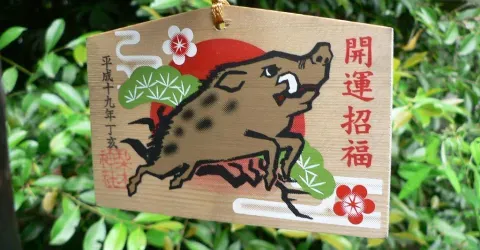
Un ema de l'année du sanglier
Flick/ Mission control
Signs still present in Japanese society
An effective means of finding one's bearings in time, the lunar calendar has long been used by the Japanese to assess time.
Each animal, representing a year of a 12-year cycle, but also a day of a 12-day cycle and two hours of the same day, it was simple to know the date and time.
On the lunar calendar, the day begins at midnight with the rat. When the needle reaches the ox, it is known that two hours have passed, and this process was also used to find one's way in space. The gap between each animal was then 30 degrees and the rat represented north.
Although Japan switched to the solar (Gregorian) calendar in 1872, the twelve signs of the lunar calendar continue to be used daily in Japanese society.
They are found in particular in temples and shrines in the form of ema, these small wooden boxes in which visitors' wishes are written, but also on end-of-year cards that are sent as the New Year approaches.
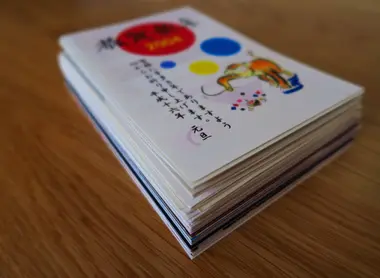
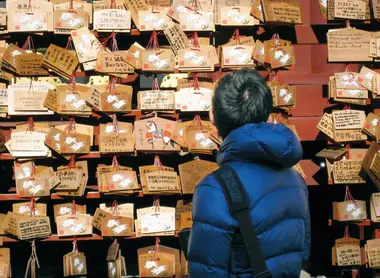
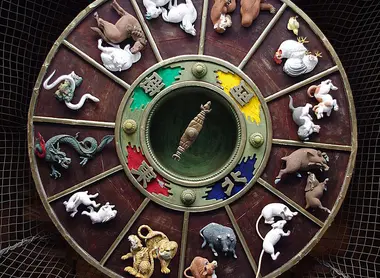
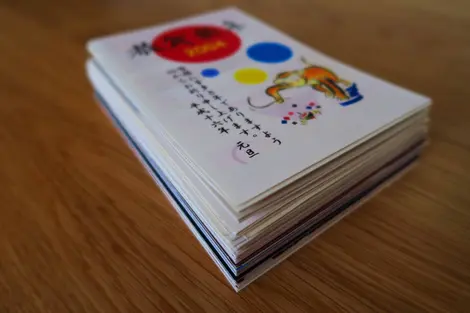
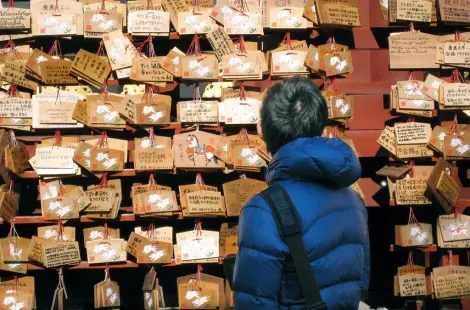
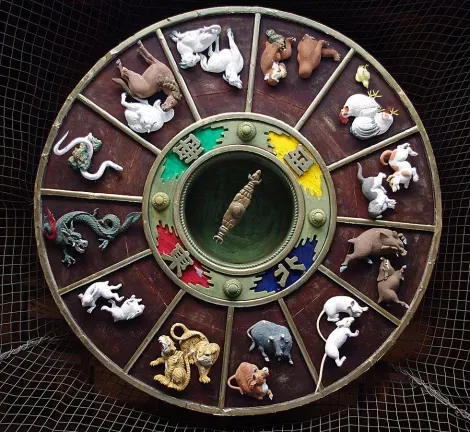
It should also be noted that many places of prayer flourish to the rhythm of the animals of the Chinese zodiac. The Inari shrines, for example, dedicated to the deity of the harvest, organize their annual festival on the first day of the horse in February, while the Benzaiten temples, dedicated to the Buddhist deity of the same name, organize theirs on the first day of the snake. . This is because the deity Inari is related to agriculture where horses are used while the goddess Benzaiten is associated with the serpent and the dragon.
Finally, the twelve signs appear regularly in Buddhist temples where they are personified in the form of guardians of Buddha.
